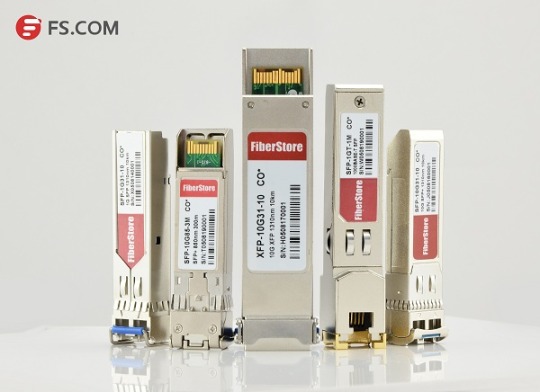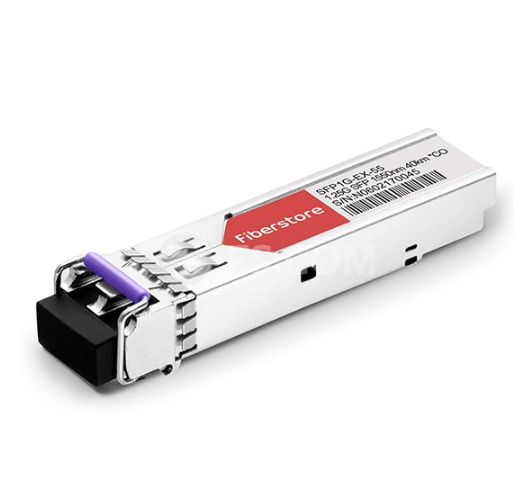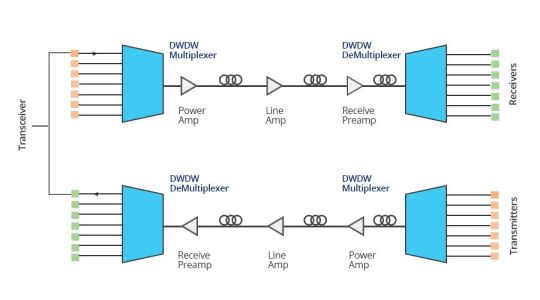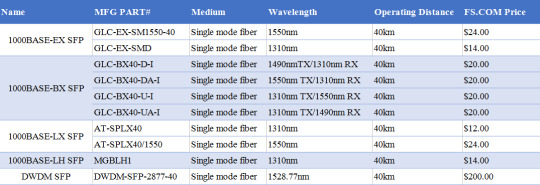#Bidi Gigabit Media Converter
Text
[GelecekBT] CLR Networks Gigabit Ethernet Bidi 1-Core Fiber Optik Media Converter Seti [SM , SC Simplex 20km]
#Tek Core Converter#WDM Media Converter#Bidi Gigabit Media Converter#GelecekBT#Gigabit Media Dönüştürücü#Ethernet fiber converter
2 notes
·
View notes
Text
Dòng sản phẩm cho gia đình MGB SFP Mini-GBIC Gigabit Ethernet có thể sử dụng cho sản phẩm switch có giao diện cổng SFP của Planet. Khoảng cách được mở rộng từ 100m (với cổng TP), 500m (chế độ Multi-mode, LC) lên tới 120km (chế độ đơn mode, LC).
Mô hình ứng dụng
Sản phẩm cho gia đình module MGB SFP Gigabit Ethernet có thể sử dụng với sản phẩm Switch và bộ chuyển đổi có giao diện cổng SX/LX SFP của Planet. Khoảng cách sẽ được mở rộng từ 550m (MM) lên tới 120 km (Single-mode, LC).
Thiết bị cho phép hoạt động hot-pluggable và hot-swappable. Người sử dụng có thể tháo lắp module ra khỏi bất thiết bị cổng SFP nào mà không cần khởi động lại Switch/Media Converter.
Đặc tính kỹ thuật
Làm việc với chuẩn IEEE 802.3z Gigabit Ethernet.
Cổng quang tốc độ 1000Mbps.
Thiết kế đầu cắm SFP theo đúng chuẩn công nghiệp.
Kết nối Duplex LC.
PECL lối vào và lối ra.
Nguồn điện 3.3V.
Tín hiệu TTL nhận biết chỉ thị.
Hot Pluggable.
Làm việc tương thích với chuẩn EN 60825-1.
Sử dụng không cần cài đặt.
Thông số kỹ thuật
Model
MGB-Series 1000Base-SX/LX Mini-GBIC Transceiver
MGB-SX
PHY Type
IEEE 802.3z 1000Base-SX
Fiber Type
Multi-Mode
Connector
LC
Wavelength
850nm
Maximum Distance
220m~550m
MGB-LX
PHY Type
IEEE 802.3z 1000Base-LX
Fiber Type
Single Mode
Connector
LC
Wavelength
1310nm
Maximum Distance
10km
MGB-L30
PHY Type
IEEE 802.3z 1000Base-LX
Fiber Type
Single Mode
Connector
LC
Wavelength
1310nm
Maximum Distance
30km
MGB-L50
PHY Type
IEEE 802.3z 1000Base-ZX
Fiber Type
Single Mode
Connector
LC
Wavelength
1550nm
Maximum Distance
50km
MGB-L70
PHY Type
IEEE 802.3z 1000Base-ZX
Fiber Type
Single Mode
Connector
LC
Wavelength
1550nm
Maximum Distance
70km
MGB-L120
PHY Type
IEEE 802.3z 1000Base-ZX
Fiber Type
Single Mode
Connector
LC
Wavelength
1550nm
Maximum Distance
120km
MGB-LA10
PHY Type
IEEE 802.3ah 1000Base-BX
Fiber Type
Single Mode
Connector
WDM/Bidi LC
Wavelength
TX: 1310nm, RX: 1550nm
Maximum Distance
10km
MGB-LB10
PHY Type
IEEE 802.3ah 1000Base-BX
Fiber Type
Single Mode
Connector
WDM/Bidi LC
Wavelength
TX: 1550nm, RX: 1310nm
Maximum Distance
10km
MGB-LA20
PHY Type
IEEE 802.3ah 1000Base-BX
Fiber Type
Single Mode
Connector
WDM/Bidi LC
Wavelength
TX: 1310nm, RX: 1550nm
Maximum Distance
20km
MGB-LA40
PHY Type
IEEE 802.3ah 1000Base-BX
Fiber Type
Single Mode
Connector
WDM/Bidi LC
Wavelength
TX: 1310nm, RX: 1550nm
Maximum Distance
40km
MGB-LB40
PHY Type
IEEE 802.3ah 1000Base-BX
Fiber Type
Single Mode
Connector
WDM/Bidi LC
Wavelength
TX: 1550nm, RX: 1310nm
Maximum Distance
40km
MGB-GT
PHY Type
IEEE 802.3ab 1000Base-T
Connector
RJ-45, Auto-negotiation, Auto-MDI/MDI-X
Maximum Distance
100m
Thông tin đặt hàng
MGB-Series Transceiver
1000Base-SX/LX SFP Transceiver
0 notes
Text
SFP 40 km VS. DWDM SFP: Which to Choose?
Small Form-factor Pluggable (SFP) is a compact, hot-pluggable transceiver used for both telecommunication and data communications applications. It is also called mini-GBIC for its smaller size, which is the upgraded version of GBIC transceiver. These 1Gb SFP modules are capable of supporting speeds up to 4.25 Gbps. And they are most often used for Fast Ethernet of Gigabit Ethernet applications. It interfaces a network device motherboard (for a switch, router, media converter or similar device) to a fiber optic or copper networking cable. SFP modules are commonly available in several different categories: 1000BASE-T SFP, 1000BASE-EX SFP, 1000BASE-SX SFP, 1000BASE-LX/LH SFP, 1000BASE-BX SFP, 1000BASE-ZX SFP, CWDM SFP and DWDM SFP. These modules support different distance according to the different Gigabit Ethernet standard. Today’s main subject will discuss SFP 40 km vs. DWDM SFP.

SFP 40 km
SFP 40 km transceiver is designed for highly reliable fiber optic network links up to 40 km. It is a cost effective transceiver designed to enable 1Gb for data center and core network applications. 1000BASE-EX SFP is the most popular SFP 40 km transceiver which runs on 1310nm wavelength lasers and achieves 40km link length. Except that, 1000BASE-BX BiDi SFP, 1000BASE-LH SFP and 1000BASE-LX SFP can also realize the transmission distance up to 40 km. The following will introduce these 1GbE SFP 40 km transceivers respectively.
1000BASE-EX SFP 40 km
1000BASE-EX SFP transceiver module is designed to connect a Gigabit Ethernet port to a network and has dual LC/PC single mode connectors. It operates on standard single-mode fiber-optic link spans of up to 40 km in length. The SFP Ethernet module provides a dependable and cost-effective way to add, replace or upgrade the ports on switches, routers and other networking equipment. Cisco GLC-EX-SM1550-40 and Cisco GLC-EX-SMD are 1G single mode fiber SFP 40 km modules for 1000BASE-EX Gigabit Ethernet transmission. GLC-EX-SM1550-40 supports a 1550nm wavelength signaling, while GLC-EX-SMD supports a 1310nm wavelength signaling.

1000BASE-BX SFP 40 km
1000BASE-BX SFP is a kind of BiDi transceiver, which can be divided into 1000BASE-BX-D SFP and 1000BASE-BX-U SFP. These two SFP transceivers must be used in pairs to permit a bidirectional Gigabit Ethernet connection using a single strand of single mode fiber (SMF) cable. The 1000BASE-BX-D SFP operates at wavelengths of 1490nm TX/1310nm RX, and the 1000BASE-BX-U SFP operates at wavelengths of 1310nm TX/1490nm RX.
1000BASE-BX-D BiDi SFP 40 km
Cisco GLC-BX40-D-I and GLC-BX40-DA-I are pluggable fiber optical transceivers for Gigabit Ethernet 1000BASE-BX and Fiber Channel communications. They support link length of up to 40 km point to point on single mode fiber at 1Gbps bidirectional and use an LC connector. The GLC-BX40-D-I transceiver transmits a 1490nm channel and receives a 1310nm signal, whereas GLC-BX40-DA-I transmits at a 1550nm wavelength and receives a 1310nm signal.
1000BASE-BX-U BiDi SFP 40 km
Similar to 1000BASE-BX-D 40 km SFP , Cisco GLC-BX40-U-I and GLC-BX40-UA-I also support link length of up to 40 km point to point on single mode fiber at 1Gbps bidirectional and use an LC connector. The main difference is the wavelength: GLC-BX40-U-I transmits a 1310nm channel and receives a 1550nm signal, whereas GLC-BX40- UA-I transmits at a 1310nm wavelength and receives a 1490nm signal. A GLC-BX40-D-I or GLC-BX40-DA-I device connects to a GLC-BX40-U-I or GLC-BX40-UA-I device with a single strand of standard SMF with an operating transmission range up to 40 km.
1000BASE-LX SFP 40 km
1000BASE-LX is a standard specified in IEEE 802.3 Clause 38 which uses a long wavelength laser. The “LX” in 1000BASE-LX stands for long wavelength, indicating that this version of Gigabit Ethernet is intended for use with long-wavelength transmissions (1270 - 1355nm) over long cable runs of fiber optic cabling. Allied Telesis AT-SPLX40 and Allied Telesis AT-SPLX40/1550 are 1000BASE-LX SFP single-mode modules supports Gigabit Ethernet over single-mode cables at distances up to 40 km. AT-SPLX40 operates over a wavelength of 1310nm for 40 km, whereas AT-SPLX40/1550 operates over a wavelength of 1550nm.
1000BASE-LH SFP 40 km
Unlike 1000BASE-LX, 1000BASE-LH is just a term widely used by many vendors. Long Haul (LH) denotes longer distances, so 1000BASE-LH SFP modules operate at a distance up to 70 km over single mode fiber. Cisco Linksys MGBLH1 is a easy-to-install modules that provide a simple way to add fiber connectivity or to add an extra Gigabit Ethernet port to switches. The MGE transceiver can support distances up to 40 km over single-mode fiber at a 1310nm wavelength.
DWDM SFP
DWDM SFP transceivers are used as part of a DWDM optical network to provide high-capacity bandwidth across an optical fiber network, which is a high performance, cost effective module for serial optical data communication applications up to 4.25Gb/s. DWDM transceiver uses different wavelengths to multiplex several optical signal onto a single fiber, without requiring any power to operate. There are 32 fixed-wavelength DWDM SFPs that support the International Telecommunications Union (ITU) 100-GHz wavelength grid. The DWDM SFP can be also used in DWDM SONET/SDH (with or without FEC), but for longer transmission distance like 200 km links and Ethernet/Fibre Channel protocol traffic for 80 km links. Cisco C61 DWDM-SFP-2877-40 is a 1000BASE-DWDM SFP 40km transceiver, which is designed to support distance up to 40 km over single-mode fiber and operate at a 1528.77nm DWDM wavelength (Channel 61) as specified by the ITU-T.

SFP 40 km VS. DWDM SFP
Transmission Medium
Generally, the standard SFP 40 km transceivers transmit through the single mode fiber, while DWDM SFP carries signals onto a single optical fiber to achieve maximum distances by using different wavelengths of laser light. So the DWDM SFP transceivers do not require any power to operate.
Wavelength
The standard SFP 40 km transceivers support distances up to 40 km over single-mode fiber at a 1310nm/1550nm wavelength. (the BiDi SFP has 1490nm/1550nm TX & 1310nm RX or 1310nm TX & 1490nm/1550nm RX ). However, DWDM SFP operates at a nominal DWDM wavelength from 1528.38 to 1563.86nm onto a single- mode fiber. Among them, 40 km DWDM SFP operates at a 1528.77nm DWDM wavelength (Channel 61).
Application
DWDM SFP is used in DWDM SONET/SDH, Gigabit Ethernet and Fibre Channel applications. These modules support operation at 100Ghz channel. The actual SFP transceiver offers a transparent optical data transmission of different protocols via single mode fiber. And for back-to-back connectivity, a 5-dB inline optical attenuator should be inserted between the fiber optic cable and the receiving port on the SFP at each end of the link.
Price
DWDM provides ultimate scalability and reach for fiber networks. Boosted by Erbium Doped-Fiber Amplifiers (EDFAs) - a sort of performance enhancer for high-speed communications, DWDM systems can work over thousands of kilometers. Most commonly, DWDM SFP is much more expensive than the standard SFP. You can see the price more clearly in the following cable.

Conclusion
1000BASE SFP transceiver is the most commonly used component for Gigabit Ethernet application. With so many types available in the market, careful notice should be given to the range of differences, both in distance and price of multimode and single-mode fiber optics. Through SFP 40 km vs. DWDM SFP, if you are looking for SFP modules over long distance and with better scalability, DWDM SFP module is the ideal choice.
Related Article: SFP Transceiver: To Be or Not To Be?
0 notes
Text
Applications of Fiber Media Converter
With the increased demands on the network, various network devices are manufactured to meet these demands. Fiber media converter is one of a key components in those devices. It features of high bandwidth capacity, long distance operation and reliability, making it popular in modern networking systems. This post is going to explore some basis and illustrates several application examples of fiber media converter.
Basics of Fiber Media Converter
Fiber media converter is a device that can convert an electrical signal into light waves between copper UTP (unshielded twisted pair) networks and fiber optic networks. As we all know, compared with Ethernet cable, fiber optic cables have longer transmission distance, especially the single mode fiber cables. Therefore, fiber media converters help operators solve the transmission problem perfectly.
Fiber media converters are typically protocol specific and are available to support a wide variety of network types and data rates. And they also provide fiber-to-fiber conversion between single mode and multimode fiber. Besides, some fiber media converters like copper-to-fiber and fiber-to-fiber media converters have the capability of wavelength conversion by using SFP transceivers.
According to different standards, fiber media converters can be classified into different types. There is managed media converter and unmanaged media converter. The differences between them are that the latter one can provide additional network monitoring, fault detection and remote configuration functionality. There is also copper-to-fiber media converter, serial to fiber media converter and fiber-to-fiber media converter.
Applications of Common Types of Fiber Media Converters
With the several advantages mentioned above, fiber media converters are widely used to bridge copper networks and optical systems. This part is primarily to introduce two types of fiber media converters’ applications.
Fiber-to-Fiber Media Converter
This type of fiber media converter enables the connections between single mode fiber (SMF) and multimode fiber (MMF), including between different “power” fiber sources and between single-fiber and dual fiber. Following are some application examples of fiber-to-fiber media converter.
Multimode to Single Mode Fiber Application
Since SMF supports longer distances than MMF, it’s common to see that conversions from MMF to SMF in enterprise networks. And fiber-to-fiber media converter can extend a MM network across SM fiber with distances up to 140km. With this capacity, long distance connection between two Gigabit Ethernet switches can be realized using a pair of Gigabit fiber-to-fiber converters (as shown in the following picture).
Dual Fiber to Single-Fiber Conversion Application
Single-fiber usually operates with bi-directional wavelengths, often referred to as BIDI. And the typically used wavelengths of BIDI single-fiber are 1310nm and 1550nm. In the following application, the two dual fiber media converters are linked by a single mode fiber cable. Since there are two different wavelengths on the fiber, the transmitter and receiver on both ends need to be matched.
Serial to Fiber Media Converters
This kind of media converter provides fiber extension for serial protocol copper connections. It can be connected with RS232, RS422 or RS485 port of computer or other devices, solving the problems of traditional RS232, RS422 or RS485 communication conflict between distance and rate. And it also supports point-to-point and multi-point configurations.
RS-232 Application
RS-232 fiber converters can operate as asynchronous devices, support speeds up to 921,600 baud, and support a wide variety of hardware flow control signals to enable seamless connectivity with most serial devices. In this example, a pair of RS-232 converters provides the serial connection between a PC and terminal server allowing access to multiple data devices via fiber.
RS-485 Application
RS-485 fiber converters are used in many multi-point applications where one computer controls many different devices. As shown in the picture below, a pair of RS-485 converters provides the multi-drop connection between the host equipment and connected multi-drop devices via fiber cable.
Summary
Affected by the limitation of Ethernet cables and increased network speeds, networks are becoming more and more complicated. The application of fiber media converters not only overcome the distance limitations of traditional network cables, but enables your networks to connect with different types of medias like twisted pair, fiber and coax.
Related article: Things You Need to Know About Fiber Media Converter
Sources:http://www.chinacablesbuy.com/applications-of-fiber-media-converter.html
0 notes